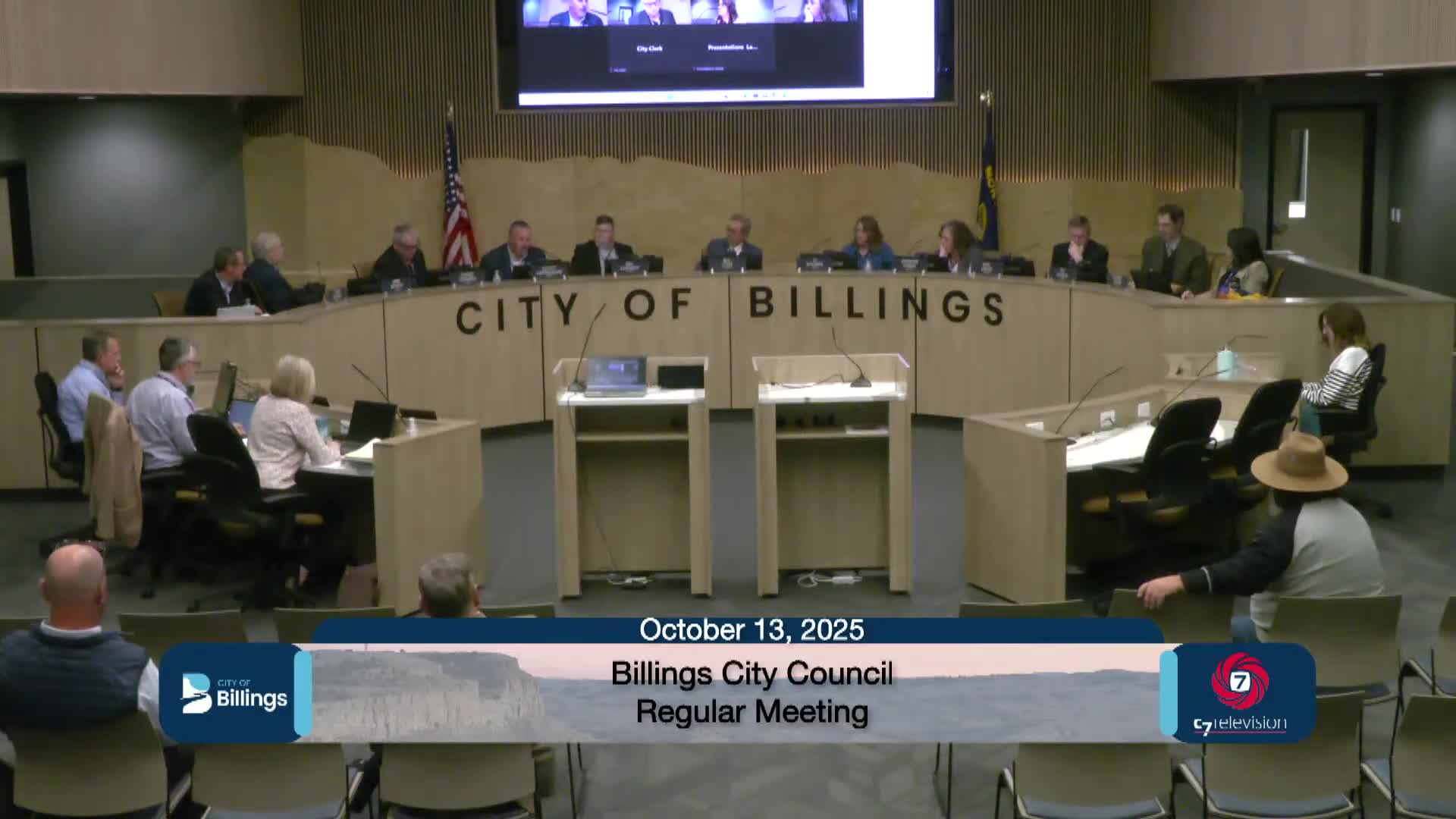Billings council votes to study replacing project-by-project traffic studies with a system impact fee
October 14, 2025 | Billings, Yellowstone, Montana
This article was created by AI summarizing key points discussed. AI makes mistakes, so for full details and context, please refer to the video of the full meeting. Please report any errors so we can fix them. Report an error »

The Billings City Council on Oct. 13 unanimously approved a council-initiated directive to schedule work-session time to review the city’s traffic impact study (TIS) procedures and to evaluate a citywide traffic impact fee system. The motion asked staff to clarify whether a TIS should be submitted at preliminary plat submittal rather than at the earlier completeness-and-sufficiency review and to bring options for a system impact-fee model that would replace the current project-by-project exaction approach.
Council members and private-sector speakers criticized the current process as inefficient and unpredictable for developers and the public. Council Member Raspelider (sponsor) said the current practice produces numerous expensive, standalone TIS reports that lead to developer-level exactions tied to specific intersections; he argued this fragments funds and leaves many small balances tied to intersections that are not ultimately improved. He said some legacy impact balances approach $2 million and gave an example of a $10,000 contribution tied to a low-impact intersection that will never get a signal.
Staff response and legal context: Planning and public-works staff noted code language referencing completeness-and-sufficiency review and explained due-process notice considerations around zone and code changes. Staff said they will prepare materials for the work session showing how the code currently specifies TIS timing and what a clarification would require. Councilors and staff also discussed legal standards: council discussion contrasted the constitutional Dolan/rough-proportionality test that governs developer exactions tied to a specific parcel with a broader Penn Central-style regulatory approach that can support citywide impact fees and is generally more durable in litigation when properly structured.
What the work session will do: Council directed staff to (a) prepare a work session clarifying the submittal timing for TIS documents in the subdivision process and (b) begin a process to analyze and design a potential traffic impact fee structure based on EDUs or other metrics so that contributions can be pooled and programmed for network improvements rather than held at individual intersections. Staff said preparing a TIS-timing clarification and compiling recent application examples will require planning and engineering review; a full impact-fee study would be a larger effort requiring policy choices and likely additional consultant work.
Ending: The motion passed without recorded opposition. Council members who supported the move said they want a more predictable, equitable and administrable approach to funding transportation investments tied to growth.
Council members and private-sector speakers criticized the current process as inefficient and unpredictable for developers and the public. Council Member Raspelider (sponsor) said the current practice produces numerous expensive, standalone TIS reports that lead to developer-level exactions tied to specific intersections; he argued this fragments funds and leaves many small balances tied to intersections that are not ultimately improved. He said some legacy impact balances approach $2 million and gave an example of a $10,000 contribution tied to a low-impact intersection that will never get a signal.
Staff response and legal context: Planning and public-works staff noted code language referencing completeness-and-sufficiency review and explained due-process notice considerations around zone and code changes. Staff said they will prepare materials for the work session showing how the code currently specifies TIS timing and what a clarification would require. Councilors and staff also discussed legal standards: council discussion contrasted the constitutional Dolan/rough-proportionality test that governs developer exactions tied to a specific parcel with a broader Penn Central-style regulatory approach that can support citywide impact fees and is generally more durable in litigation when properly structured.
What the work session will do: Council directed staff to (a) prepare a work session clarifying the submittal timing for TIS documents in the subdivision process and (b) begin a process to analyze and design a potential traffic impact fee structure based on EDUs or other metrics so that contributions can be pooled and programmed for network improvements rather than held at individual intersections. Staff said preparing a TIS-timing clarification and compiling recent application examples will require planning and engineering review; a full impact-fee study would be a larger effort requiring policy choices and likely additional consultant work.
Ending: The motion passed without recorded opposition. Council members who supported the move said they want a more predictable, equitable and administrable approach to funding transportation investments tied to growth.
View full meeting
This article is based on a recent meeting—watch the full video and explore the complete transcript for deeper insights into the discussion.
View full meeting
